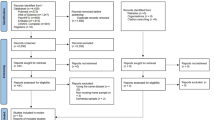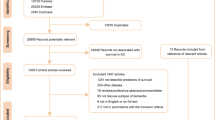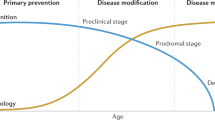Abstract
Data sources The electronic databases Medline, the Cochrane Central Register of Controlled Trials, Embase, China National Knowledge Infrastructure, China Science and Technology Journal Database, Wanfang Data, ClinicalTrials.gov and WHO International Clinical Trials Registry Platform, from inception to September 2020, were searched to identify the eligible studies measuring the association between periodontal disease and Alzheimer's disease or mild cognitive impairment.
Study selection Cohort, cross-sectional and case-control studies, without any language restrictions, were selected by two reviewers independently.
Data extraction and synthesis Data extraction and quality assessment were performed by two reviewers independently. Data was synthesised quantitatively with meta-analyses using a random or fixed-effects model, with P <0.1 considered statistically significant. Quality assessment of cohort and case-control studies was carried out using the Newcastle-Ottawa scale (NOS) and quality assessment of cross-sectional studies was undertaken using the Agency for Healthcare Research and Quality (AHRQ) tool. Heterogeneity of included studies was assessed with I2.
Results Thirteen studies, including five cross-sectional studies, five case-control studies, two retrospective cohort studies and one prospective cohort study were found to be eligible. Meta-analyses showed elevated risk for Alzheimer's disease (odds ratio = 1.78; random-effects model; significant heterogeneity) and mild cognitive impairment (odds ratio = 1.60; fixed-effects model; low heterogeneity) in patients with periodontal disease. One case-control study and all cohort studies had high quality, while four case-control studies had medium quality, as evaluated by the NOS. Among the cross-sectional studies evaluated by the AHRQ tool, only one had high quality, whereas other studies had medium quality.
Conclusions Within the limitations of the included studies, the authors concluded that periodontal disease is related to an elevated risk of Alzheimer's disease and mild cognitive impairment.
This is a preview of subscription content, access via your institution
Access options
Subscribe to this journal
Receive 4 print issues and online access
$259.00 per year
only $64.75 per issue
Buy this article
- Purchase on Springer Link
- Instant access to full article PDF
Prices may be subject to local taxes which are calculated during checkout
Similar content being viewed by others
Change history
25 March 2022
A Correction to this paper has been published: https://doi.org/10.1038/s41432-022-0234-2
References
Hu X, Zhang J, Qiu Y, Liu Z. Periodontal disease and the risk of Alzheimer's disease and mild cognitive impairment: a systematic review and meta-analysis. Psychogeriatrics 2021; 21: 813-825.
Critical Appraisal Skills Programme. CASP Systematic Review Checklist. 2018. Available at https://casp-uk.net/casp-tools-checklists (accessed October 2021).
Shea B J, Reeves B C, Wells G et al. AMSTAR 2: a critical appraisal tool for systematic reviews that include randomised or non-randomised studies of healthcare interventions, or both. Br Med J 2017; DOI: 10.1136/bmj.j4008.
Author information
Authors and Affiliations
Rights and permissions
About this article
Cite this article
Dhingra, K., Grimm, WD., Chaudhari, P. et al. Does periodontal disease elevate the risk of Alzheimer's disease and mild cognitive impairment?. Evid Based Dent 22, 123–125 (2021). https://doi.org/10.1038/s41432-021-0214-y
Received:
Accepted:
Published:
Issue Date:
DOI: https://doi.org/10.1038/s41432-021-0214-y



